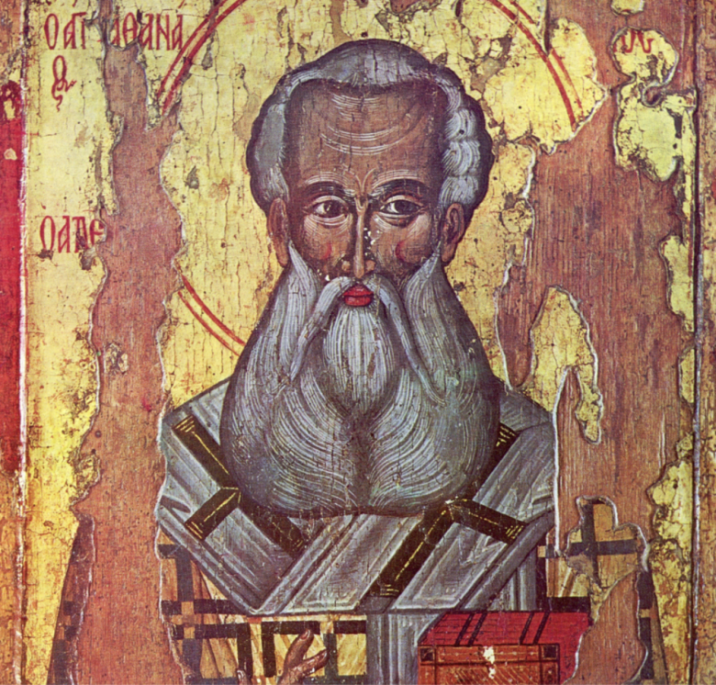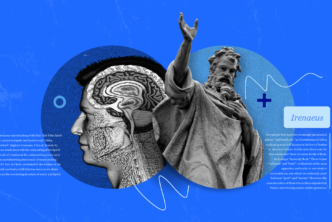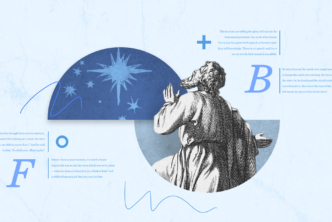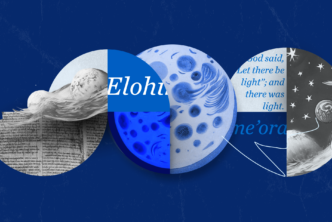Did you know that Athanasius, Cogent of the Trinity, recommended reading the Apocrypha? In his 39th Festal Letter, after giving us one of the earliest canon lists, he writes the following:
“…there are other books besides these not indeed included in the Canon but appointed by the Fathers to be read by those who newly join us, and who wish for instruction in the word of godliness. The Wisdom of Solomon, and the Wisdom of Sirach, and Esther, and Judith, and Tobit, and that which is called the Teaching of the Apostles [i.e. Didache], and the Shepherd.”
But why would such a venerable father of the church recommend the Apocrypha and other non-canonical literature? Because he recognized its utility in understanding scripture, and so should we. Quite frankly, we should all read the Apocrypha, irrespective of our opinion about its canonicity.1
The Seven Connection
Let me offer two examples from the first few chapters of Tobit, after first recalling the challenge of the Sadducees to Jesus in Matthew 22:23-33:
The same day some Sadducees came to him, saying there is no resurrection; and they asked him a question, saying, “Teacher, Moses said, ‘If a man dies childless, his brother shall marry the widow, and raise up children for his brother.’ Now there were seven brothers among us; the first married, and died childless, leaving the widow to his brother. The second did the same, so also the third, down to the seventh. Last of all, the woman herself died. In the resurrection, then, whose wife of the seven will she be? For all of them had married her.”
This always struck me as an awfully odd hypothetical. Why seven? Couldn’t you get the point across with three? Now, let’s look at Tobit 3:8-9.
On the same day, at Ecbatana in Media, it also happened that Sarah, the daughter of Raguel, was reproached by one of her father’s maids. For she had been married to seven husbands, and the wicked demon Asmodeus had killed each of them before they had been with her as is customary for wives. So the maid said to her, “You are the one who kills your husbands! See, you have already been married to seven husbands and have not borne the name of a single one of them. Why do you beat us? Because your husbands are dead? Go with them! May we never see a son or daughter of yours!”
Is it possible that the background for the Sadducees question was this story? The ICC acknowledges the possibility in a footnote: “Cf. Tob 3:7–15. Perhaps this text from Tobit, which tells of a woman who married seven brothers, lies in the background; or perhaps the synoptics and Tobit independently reflect a folk-tale. Certainly seven brothers or seven companions show up regularly in popular literature all over the world.”2
Finding Treasure
Now, let’s look at Matthew 6:19-21 (the Sermon on the Mount).
Do not store up for yourselves treasures on earth, where moth and rust consume and where thieves break in and steal; but store up for yourselves treasures in heaven, where neither moth nor rust consumes and where thieves do not break in and steal. For where your treasure is, there your heart will be also.
That’s great, huh? But what is this treasure? Jesus is a little vague here, and if we’re honest, we’ve all just accepted an assumed interpretation of this passage without necessarily understanding it. Even the ICC admits, “there is in 6:19–21 no explanation of how to store up treasure in heaven, this lack is more than made up by the broader context, Mt 5–7.”3 Perhaps it is, but it does not seem obviously so.
Now let’s look at Tobit 4:6-9.
To all those who practice righteousness give alms from your possessions, and do not let your eye begrudge the gift when you make it. Do not turn your face away from anyone who is poor, and the face of God will not be turned away from you. If you have many possessions, make your gift from them in proportion; if few, do not be afraid to give according to the little you have. So you will be laying up a good treasure for yourself against the day of necessity.
Tobit seems to be developing Deuteronomy 15:7-8 here, but that’s another story entirely. What’s interesting is that it seems that Jesus is developing Tobit. He uses that same “laying up treasure for yourself” language. Tobit predates Jesus, and it’s entirely possible that his instructions to his son (chapter 4) would be well known in Jesus’s day. By understanding this reference, we get clarity into what Jesus means by “treasure in heaven.” The treasure is other people. When we are generous to others, we’re being generous to God, and thereby clearly indicating where our heart is.
Read Unto Godliness
In searching texts like this we must be wary. however, of parallelomania. It is entirely possible that the similarities are simply surface level and nothing more. However, even a recognition of the similarities between ancient texts situated within the Jewish, and then Christian, milieu, broadens the scope of one’s understanding about a world many hundreds of years before, and thus beyond, our own.
Responsible scholars and pastors will invest time into familiarizing themselves with the same apocryphal texts that Jesus and his apostles had either read or heard during their own lifetimes. Such a reading exercise not only enables you to peek into that ancient cultural context with clarity. Reading the Apocrypha nourishes and blossoms your wisdom and, remarkably, according to one of the greatest Fathers of the Church, godliness.4.
Ryan Lytton is the Director of Academic Services at at Life Pacific University-Virginia.
Resources mentioned in this article:

Davies & Allison, Matthew, Vol. 1 (International Critical Commentary Series | ICC)

David deSilva, Introducing the Apocrypha: Message, Context, and Significance (Baker Academic, 2002)
- I do not accept it as scripture, though I understand why others do.
- W. D. Davies and Dale C. Allison Jr., A Critical and Exegetical Commentary on the Gospel according to Saint Matthew, vol. 3, International Critical Commentary (London; New York: T&T Clark International, 2004), 225fn27.
- W. D. Davies and Dale C. Allison Jr., A Critical and Exegetical Commentary on the Gospel according to Saint Matthew, vol. 1, International Critical Commentary (London; New York: T&T Clark International, 2004), 632.
- If you want to read the Apocrypha, there are a number of options in Logos to help you. While you are at it, the best introduction to this text by far is David deSilva’s wonderful “Introducing the Apocrypha.”





